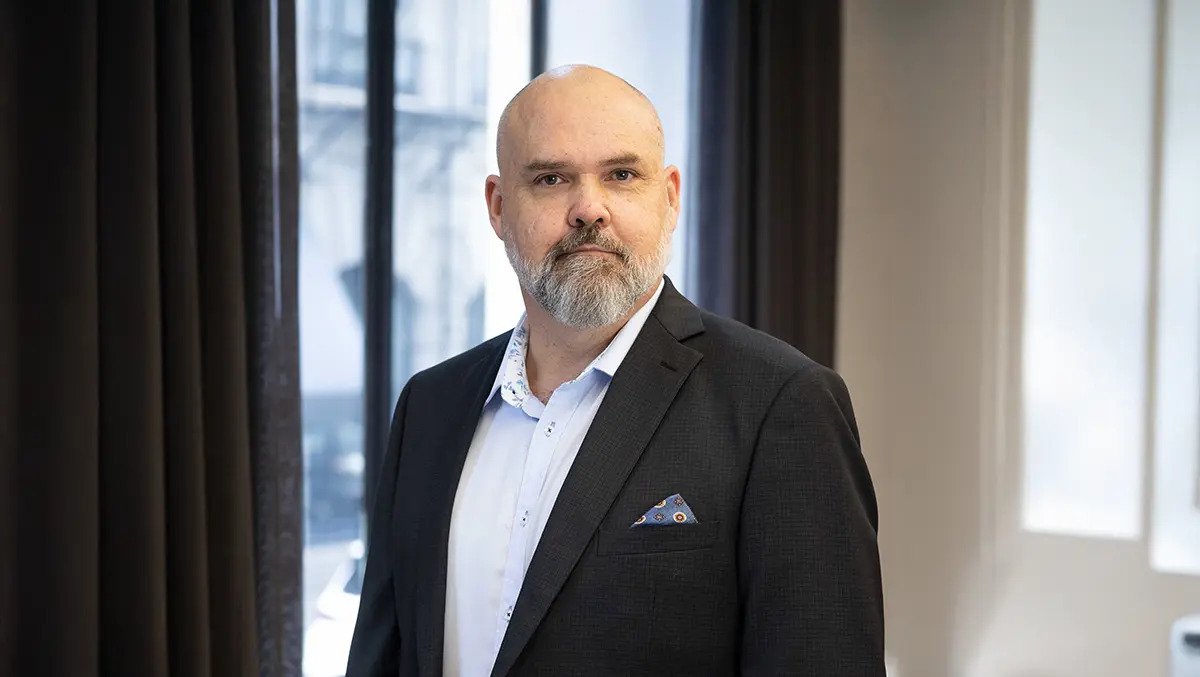Business Insider’s Discourse stories provide perspectives on the day’s most pressing issues, informed by analysis, reporting, and expertise.
Business
America’s Biggest Employers Are Facing the Great Shrinking

In June, Amazon CEO Andy Jassy had a blunt message for his 350,000 corporate employees: There were going to be fewer of them in the near future, thanks to the “efficiency gains” he expected from AI. The proclamation generated big headlines and an uproar from staff. But it struck me as merely honest. He was acknowledging something that pretty much every CEO who sits atop a large white-collar workforce is quietly hoping to achieve sooner or later.
After all, Jassy hasn’t been the only executive to hint at a future of lower headcount. The head of JPMorgan’s consumer and community business predicted in May that AI will reduce the number of employees in its operations division by 10%. That same month, the CEO of Klarna said that the company’s investments in AI has already driven the company’s headcount to shrink by 40%. And the CEO of Ford — a company that employs tens of thousands of white-collar professionals — declared that AI will wipe out “literally half” of all white-collar jobs. Meanwhile, Kian Katanforoosh, the CEO and founder of the software startup Workera, tells me that he never wants to have much more than the 80 or so employees he has today, no matter how successful his business ends up becoming. “I truly believe we can go super super far without growing more,” he says. “I’m an engineer. I don’t want to have to manage so many people if I don’t need to.”
It’s not like CEOs ever enjoyed shelling out for the salaries or navigating the personnel headaches that come with the sprawling bureaucracies they employ. But for more than a century, armies of office workers were a necessary cost of doing business. To grow from tiny upstarts into titans of industry, companies needed an ever-multiplying number of HR reps, accountants, marketers, engineers, analysts, and project managers.
In recent months, that 100-year-trend is starting to come undone. Everywhere you look, AI appears to be helping leaner teams take on work that used to require more people. And executives are talking about their large workforces — once their greatest competitive advantage — as if they’re an unfortunate holdover from a bygone, bloated era.
If today’s corporate giants shrink their ranks, and if tomorrow’s giants never need to bulk up in the first place, we may well be witnessing the end of a defining feature of corporate America: the mega-employer. That could give rise to a whole new generation of nimble companies that innovate faster — but also leave workers navigating a world of diminished career paths and fewer jobs.
Before the Industrial Revolution, most Americans worked for themselves as farmers or craftsmen. And those who didn’t worked for very small operations — say, a few journeymen training under a master shoemaker. The resulting economy was a patchwork of all these tiny businesses.
That started to change with the advent of capital-intensive industries like textile manufacturing, which required organizing larger groups of people under a single employer. Then came railroads in the late 19th century. With projects that took many years to realize and stretched over thousands of miles, vast numbers of workers needed to be on the same page. “If you mess it up, there’s a big explosion,” says Louis Hyman, a political economy historian at Johns Hopkins. “You needed to really coordinate your mechanisms and make sure that people are doing things exactly the same way.”
In the 1930s, about a tenth of the labor force worked for companies with at least 10,000 people. By the end of World War II, that share had surged to a third.
As mass production developed, Hyman says, many of the most consequential innovations during this time weren’t so much technical breakthroughs: They were social inventions to coordinate the labor of all the people it took to get the most out of the new machines. The assembly line broke down complicated work into simple, repeatable, standardized tasks; scientific management emphasized the importance of monitoring, measuring, and optimizing everyone’s performance; and the M-form corporate structure created a blueprint to manage sprawling bureaucracies through a clear chain of command. In the 1930s, about a tenth of the labor force worked for businesses that employed at least 10,000 people. By the end of World War II, that share had surged to about a third.
By the 1970s, some of that bigger-is-better ideology started to change. A new management philosophy set in, normalizing layoffs that took aim at bloat. And as robots automated many blue-collar jobs, IBM mainframes and word processors eliminated a whole set of white-collar clerical roles as well. Still, there was plenty of work that technology couldn’t automate, which meant that companies needed large teams of college-educated professionals to keep them going. Even the most tech-forward companies saw their people — especially their coders — as mission-critical to their success. “Hiring great people — especially engineers — is one of the biggest challenges that any technology company has,” Mark Zuckerberg lamented in 2013. “Our country doesn’t produce the volume of engineers that the companies would want to hire.” Tech giants often hired more than they needed to make sure they had a steady supply of talent, and to attract and retain the best of the best, they treated their employees like gods.
If you were to pinpoint one moment the gods turned mortal, it would probably be November 9, 2022 — the day Meta laid off more than 11,000 employees. From there, virtually every tech company followed suit, with employers across other industries close behind. At first, the cuts were chalked up to overhiring in the pandemic. But two and a half years later, the layoffs haven’t stopped and hiring is still down. More and more, AI appears to be driving those austerity measures. In an industry that once hoarded talent like gold, the shift is striking. CEOs no longer seem to view the bulk of their workforce as indispensable, and they say as much: A common refrain among tech leaders from Mark Zuckerberg to Elon Musk to Dara Khosrowshahi now is some version of “If you don’t like it here, you should leave.” Companies like Microsoft, Meta, Google, and Salesforce had reliably increased their headcounts year after year. Now, according to the workforce analytics provider Live Data, all of them employ fewer people than they did at their 2022 peak.
J. Scott Hamilton, Live Data’s CEO, says this is probably just the beginning. To gauge how much deeper the cuts could go, his team recently analyzed the detailed responsibilities of most roles at Microsoft to estimate the share of tasks that could, in theory, be done by AI. Their conclusion: If Microsoft were to offload all of those automatable tasks to AI, it would eliminate 36% of the work currently done by employees. That would mean the company could lay off some 80,000 employees.
On the one hand, that’s an aggressive scenario: Companies are rarely able to overhaul their workflows to take full advantage of a new automation technology’s capabilities. If they do, that transition takes a very long time. And besides, some work is simply too high-stakes to entrust to error-prone AI — even if it’s technically possible. On the other, the estimate may prove conservative: Live Data’s predictions assume that AI will remain at 2025-level capabilities. Given how much better the leading large language models have become over the last two years, the best tools will almost certainly be able to handle more than what they can today.
“The optimists are saying that the good companies will simply redeploy the assets elsewhere now that they can be more efficient,” Hamilton says. “But I think an equal argument can be made that they’ll just say, ‘We’re going to do the same amount with fewer people.'”
If Microsoft offloaded all automatable tasks to AI, it could eliminate some 80,000 jobs, Live Data found.
If that sounds like a far-off hypothetical future, consider what’s already happening today at startups. OpenAI CEO Sam Altman says he’s making bets with his friends on when we’ll get the first “one-person billion-dollar company.” And Arthur Kaneko, a general partner at Coreline Ventures, tells me he’s noticed that early-stage founders are raising their initial rounds of funding with fewer employees than they would have had in the past — among the AI-fluent founders, perhaps with less than half.
“The way companies are being built is just fundamentally changing right now because of AI,” Kaneko says. “Through the use of AI coding, AI marketing, AI sales, people are able to do a lot more work with way fewer people.”
And he thinks these startups will stay lean as they scale into successful businesses. “They just won’t hire the people that Meta and Microsoft had to hire to get to where they are,” he says. “I do think per-company headcount will permanently be depressed in startups.”
There are reasons to be hopeful about a new era of smaller employers. If AI makes it cheaper and easier to launch companies, we’ll probably see more of them — and that would be great for the long-term health of the economy in all kinds of ways. New businesses tend to employ people with less experience and fewer credentials who get passed up by the bigger companies. They’re more willing to try new things, which drives innovation. And they create more competition for the established giants, which is good for consumers.
Smaller companies may also be good for the workers inside them. There’s a lot that people hate about working at big organizations: the constant turf wars, the endless layers of approval, the meetings before the meetings, the sense that you’re just one tiny inconsequential cog in a giant machine. Smaller bureaucracies would minimize that, which is one reason why people often feel more motivated in leaner workplaces. According to Gallup, employees at small companies report the highest engagement, with scores dropping below the national average once organizations hit 500 employees. On the same stage where Altman made his one-person unicorn prediction, Reddit co-founder Alexis Ohanian raved about the benefits of this possibility. “CEOs and founders are going to be so excited to get up and go to work with much smaller, much more performant, much more culturally strong teams,” he said.
But a world of shrunken employers could also rob workers of something essential: the long-term career paths that big companies used to offer. With so many roles under one roof, big companies made it possible for workers to try new things, move up, and build careers. Smaller firms don’t offer the same range of opportunities, which means people will likely need to switch companies a lot more in the future. Smaller firms are also less likely to invest in on-the-job training — a shift that would hit early-career professionals hard, just as their roles face the greatest risk from AI.
The big question is what this all means for college-educated workers. If enough startups emerge, they might create new jobs to offset the ones disappearing from big companies. But that would require an unprecedented boom in entrepreneurship — one enormous enough to make up for the retrenchment of the giants. In 2022, 29% of the American workforce worked for an organization that employed at least 10,000 people. Meanwhile, the country’s education system is churning out ever more college grads, who studied hard with the expectation of a stable future in white-collar work. If big companies hire less, and small companies also hire less, where will they all go?
The usual reassurance is that AI, like every disruptive technology before it, will eventually create more jobs than it destroys. That glosses over an important detail, according to Carl Benedikt Frey, an economist at Oxford. In the early stages of the Industrial Revolution, most innovations simply made existing work faster and cheaper — like the loom, which automated the work of skilled weavers but still produced more or less the same fabric. That made a handful of industrialists very rich, but for the average worker, wages barely budged for the first 80 or so years of industrialization. It was only later — with inventions like electricity and the automobile that gave rise to entirely novel industries — that economic growth surged and better, high-paying jobs emerged. Had that second wave never arrived, we’d remember the Industrial Revolution very differently. “Most productivity gains over the long run,” Frey says, “come from doing new and previously inconceivable things.”
Right now, corporate America seems stuck in that first phase. So many executives are laser-focused on using AI to do the same work with fewer people, rather than applying it to problems we couldn’t solve before — the kind of breakthroughs that would open up new lines of business and generate more demand for labor, not less. “A real risk is that we’re getting leaner organizations, but they’re not really creating that much new,” Frey says. “That would be a bleak future, and I do worry we’re moving in that direction.”
Correction: August 11, 2025 — A previous version of this story incorrectly stated Louis Hyman teaches at Cornell, his former employer. He now teaches at Johns Hopkins.
Aki Ito is a chief correspondent at Business Insider.
Business
Why our business is going AI-in-the-loop instead of human-in-the-loop

True story: I had to threaten Replit AI’s brain that I would report it’s clever but dumb suggestions to the AI police for lying.
I also told ChatGPT image creation department how deeply disappointed I was that it could not, after 24 hrs of iterations, render the same high-quality image twice without changing an item on the image or misspelling. All learnings and part of the journey.
We need to remain flexible and open to new tools and approaches, and simultaneously be laser focused. It’s a contradiction, but once you start down this road, you will understand. Experimentation is a must. But it’s also important to ignore the noise and constant hype and CAPS.
How our business’ tech stack evolves
A few years ago, we started with ChatGPT and a few spreadsheets. Today, our technology arsenal spans fifteen AI platforms, from Claude and Perplexity to specialised tools like RollHQ for project management and Synthesia for AI video materials. Yet the most important lesson we’ve learned isn’t about the technology itself. It’s about the critical space between human judgment and machine capability.
The data tells a compelling story about where business stands today: McKinsey reports that 72 percent of organizations have adopted AI for at least one business function, yet only one percent believe they’ve reached maturity in their implementation. Meanwhile, 90 percent of professionals using AI report working faster, with 80 percent saying it improves their work quality.
This gap between widespread adoption and true excellence defines the challenge facing every service organisation today, including our own.
Our journey began like many others, experimenting with generative AI for document drafting and research. We quickly discovered that quality was low and simply adding tools wasn’t enough. What mattered was creating a framework that put human expertise at the center while leveraging AI’s processing power. This led us to develop what we call our “human creating the loop” approach, an evolution beyond the traditional human-in-the-loop model. It has become more about AI-in-the-loop for us than the other way round.
The distinction matters.
Human-in-the-loop suggests people checking machine outputs. Human creating the loop means professionals actively designing how AI integrates into workflows, setting boundaries, and maintaining creative control. Every client deliverable, every strategic recommendation, every customer interaction flows through experienced consultants who understand context, nuance, and the subtleties that define quality service delivery.
Our evolving tech stack
Our technology portfolio has grown strategically, with each tool selected for specific capabilities.
Each undergoes regular evaluation against key metrics, with fact-checking accuracy being paramount. We’ve found that combining multiple tools for fact checking and verification, especially Perplexity’s cited sources with Claude’s analytical capabilities, dramatically improves reliability.
The professional services landscape particularly demonstrates why human judgment remains irreplaceable. AI can analyse patterns, generate reports, and flag potential issues instantly. But understanding whether a client concern requires immediate attention or strategic patience, whether to propose bold changes or incremental improvements; these decisions require wisdom that comes from experience, not algorithms.
That’s also leaving aside the constant habit of AI generalising, making things up and often blatantly lying.
For organisations beginning their AI journey, start with clear boundaries rather than broad adoption.
Investment in training will be crucial.
Research shows that 70 percent of AI implementation obstacles are people and process-related, not technical. Create internal champions who understand both the technology and your industry’s unique requirements.
Document what works and what doesn’t. Share learnings across teams. Address resistance directly by demonstrating how AI enhances rather than replaces human expertise.
The data supports this approach. Organisations with high AI-maturity report three times higher return on investment than those just beginning. But maturity doesn’t mean maximum automation. It means thoughtful integration that amplifies human capabilities.
Looking ahead, organisations that thrive will be those that view AI as an opportunity to elevate human creativity rather than replace it.
Alexander PR’s AI policy framework
Our approach to AI centres on human-led service delivery, as outlined in our core policy pillars:
- Oversight: Human-Led PR
We use AI selectively to improve efficiency, accuracy, and impact. Every output is reviewed, adjusted, and approved by experienced APR consultants – our approach to AI centres on AI-in-the-loop assurance and adherence to APR’s professional standards.
- Confidentiality
We treat client confidentiality and data security as paramount. No sensitive client information is ever entered into public or third-party AI platforms without explicit permission.
- Transparency
We are upfront with clients and stakeholders about when, how, and why we use AI to support our human-led services. Where appropriate, this includes clearly disclosing the role AI plays in research, content development, and our range of communications outputs.
- Objectivity
We regularly audit AI use to guard against bias and uphold fair, inclusive, and accurate communication. Outputs are verified against trusted sources to ensure factual integrity.
- Compliance
We adhere to all applicable privacy laws, industry ethical standards, and our own company values. Our approach to AI governance is continuously updated as technology and regulation evolve.
- Education
Our team stays up to date on emerging AI tools and risks. An internal working group regularly reviews best practices and ensures responsible and optimal use of evolving technologies.
This framework is a living document that adapts as technology and regulations evolve. The six pillars provide structure while allowing flexibility for innovation. We’ve learned transparency builds trust. Clients appreciate knowing when AI assists in their projects, understanding it means more human time for strategic thinking.
Most importantly, we’ve recognised our policy must balance innovation with responsibility. As new tools emerge and capabilities expand, we evaluate them against our core principle: does this enhance our ability to deliver exceptional service while maintaining the trust our clients place in us?
The answer guides every decision, ensuring our AI adoption serves our mission rather than defining it.
For more on our approach and regular updates on all things AI reputation, head to Alexander PR’s website or subscribe to the AI Rep Brief newsletter.
Business
Tap-in, tap-out rail ticket trial to streamline fares using GPS tracking | Rail industry

Train passengers in the East Midlands are to test technology that will let them tap in and out for journeys and be charged the best fare for their trip at the end of the day.
Trials of digital rail tickets based on GPS tracking will begin on Monday as part of the government’s plan to improve the rail network’s complex fare system.
Passengers will check in for travel on their phones with an app and have their journey tracked using satellite location technology.
The app will automatically charge them the best fare at the end of the day’s travel and provide a barcode when needed for ticket inspections or to pass through ticket barriers.
The Department for Transport (DfT) said the technology, if it proves successful, would replace the need for paper tickets and mobile tickets using QR codes, which have to be bought before travel. Passengers will be able to travel without planning or booking journeys in advance.
The technology, which has previously been tested in Switzerland, Denmark and Scotland, is being piloted in England first on East Midlands Railway services between Leicester, Derby and Nottingham, with trials to be extended to Northern Trains in Yorkshire from the end of the month. Up to 4,000 passengers are expected to take part in the pilots.
The DfT said the scheme demonstrated its commitment to improving the passenger experience and trialling innovative technology to save time and money.
The rail minister, Peter Hendy, said: “The railway ticketing system is far too complicated and long overdue an upgrade to bring it into the 21st century. Through these trials we’re doing just that, and making buying tickets more convenient, more accessible and more flexible.
“By putting passenger experience at the heart of our decision-making, we’re modernising fares and ticketing and making it simpler and easier for people to choose rail.”
after newsletter promotion
Despite widespread consensus on the need to overhaul ticketing, the DfT and rail industry have yet to find a solution. The previous government had pledged to tackle England’s complex fare system, although attempts to make savings by automating ticketing and closing ticket offices were widely resisted by MPs as well as unions.
Labour pledged a “best price guarantee” as part of fares reform under its plans for a nationalised Great British Railways, which it hopes will be up and running in 2027.
Oli Cox, the head of commercial strategy at East Midlands Railway, said more than 500 people had registered for its part in the trial. He said: “We know that complex fares can be a real barrier to travel, but this trial removes that uncertainty, making it easy to simply tap in and out on your phone, safe in the knowledge you’re always getting the best-value fare on the day.”
Business
Companies face prosecution risk as new fraud law comes into force | Corporate governance

Companies could be prosecuted and face unlimited fines if they fail to prevent fraud that their firm profits from under a corporate offence coming into force on Monday.
Under the new “failure to prevent fraud” law, large companies can be held criminally liable where an “employee, agent, subsidiary or other ‘associated person’” commits a fraud intending to benefit the organisation.
Examples could include dishonest sales practices, hiding important information from consumers or investors, or dishonest practices in financial markets. If a company is prosecuted it will have to prove to the court that it had reasonable anti-fraud measures in place.
The law will apply to large organisations that meet at least two of three criteria: having more than 250 employees, £36m turnover or £18m in total assets.
“Today marks a pivotal moment for businesses, and this new offence strengthens our anti-fraud culture to protect businesses, build corporate trust and support long-term economic growth,” said David Hanson, the fraud minister. “Fraud is a shameful crime and we are determined to bring those responsible to justice wherever it takes place.”
The law firm Irwin Mitchell said it marked a “fundamental shift” in corporate accountability by removing the previous need to prove that senior management were complicit.
It said that failure to comply with the new law, under the Economic Crime and Corporate Transparency Act, could result in unlimited fines, reputational damage and criminal investigation by the Serious Fraud Office or Crown Prosecution Service (CPS).
“The new offence will have a significant impact on organisations and their risk exposure,” said Colette Kelly, a regulatory specialist and partner at Irwin Mitchell. “[However], whether procedures are deemed to be sufficient will be a matter for the court to establish, and until we start to see the outcome of prosecutions this is somewhat of a watching brief.”
Recent figures from the Office for National Statistics showed a 31% increase in fraud last year.
The Home Office said the new offence was intended to encourage organisations to build an anti-fraud culture, in the same way the failure to prevent bribery legislation did when introduced in 2010.
“The new law represents a major step forward in holding to account those who commit corporate crime,” said Hannah von Dadelszen, the CPS’s chief crown prosecutor leading on fraud and economic crime. “Large organisations must act to put robust fraud prevention systems in place or leave themselves open to legal action.”
Irwin Mitchell said businesses should be undertaking a review of fraud risk assessments, update internal controls and ensure that staff and third parties were trained and aware of whistleblowing procedures.
-
Tools & Platforms3 weeks ago
Building Trust in Military AI Starts with Opening the Black Box – War on the Rocks
-

 Business2 days ago
Business2 days agoThe Guardian view on Trump and the Fed: independence is no substitute for accountability | Editorial
-

 Ethics & Policy1 month ago
Ethics & Policy1 month agoSDAIA Supports Saudi Arabia’s Leadership in Shaping Global AI Ethics, Policy, and Research – وكالة الأنباء السعودية
-

 Events & Conferences3 months ago
Events & Conferences3 months agoJourney to 1000 models: Scaling Instagram’s recommendation system
-

 Jobs & Careers2 months ago
Jobs & Careers2 months agoMumbai-based Perplexity Alternative Has 60k+ Users Without Funding
-

 Education2 months ago
Education2 months agoVEX Robotics launches AI-powered classroom robotics system
-

 Funding & Business2 months ago
Funding & Business2 months agoKayak and Expedia race to build AI travel agents that turn social posts into itineraries
-

 Podcasts & Talks2 months ago
Podcasts & Talks2 months agoHappy 4th of July! 🎆 Made with Veo 3 in Gemini
-

 Podcasts & Talks2 months ago
Podcasts & Talks2 months agoOpenAI 🤝 @teamganassi
-

 Mergers & Acquisitions2 months ago
Mergers & Acquisitions2 months agoDonald Trump suggests US government review subsidies to Elon Musk’s companies






















